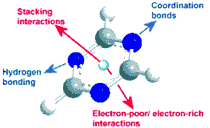QSRR Modeling of Retention Behavior of Some s-Triazine Derivatives
Keywords:
QSRR, s-triazine derivatives, physico-chemical properties, multiple linear regression.Abstract
The properties relevant to lipophilicity of four series of synthesized s-triazine derivatives have been studied by quantitative structure-retention relationship (QSRR) approach. Examination of chromatographic behavior revealed a linear correlation between RM values and the volume fraction of mobile phase modifier. Furthermore, a reliable relationship was defined between the retention constants, RM0, and theoretically calculated bioactivity descriptors for lipophilicity and solubility. Principal component analysis (PCA) followed by multiple linear regression (MLR) and hierarchical cluster analysis (HCA) was performed to identify the most important factors, to quantify their influences, and to select descriptors that best describe the behavior of the compounds investigated. The best QSRR models were further validated by leave one out technique as well as by the calculation of statistical parameters for the established theoretical models. The RM0 values of the investigated s-triazine derivatives have been recommended for description of their lipophilicity and evaluation of pharmacokinetic properties.

Downloads
Published
Issue
Section
License
Except where otherwise noted, articles in this journal are published under the Creative Commons Attribution 4.0 International License
